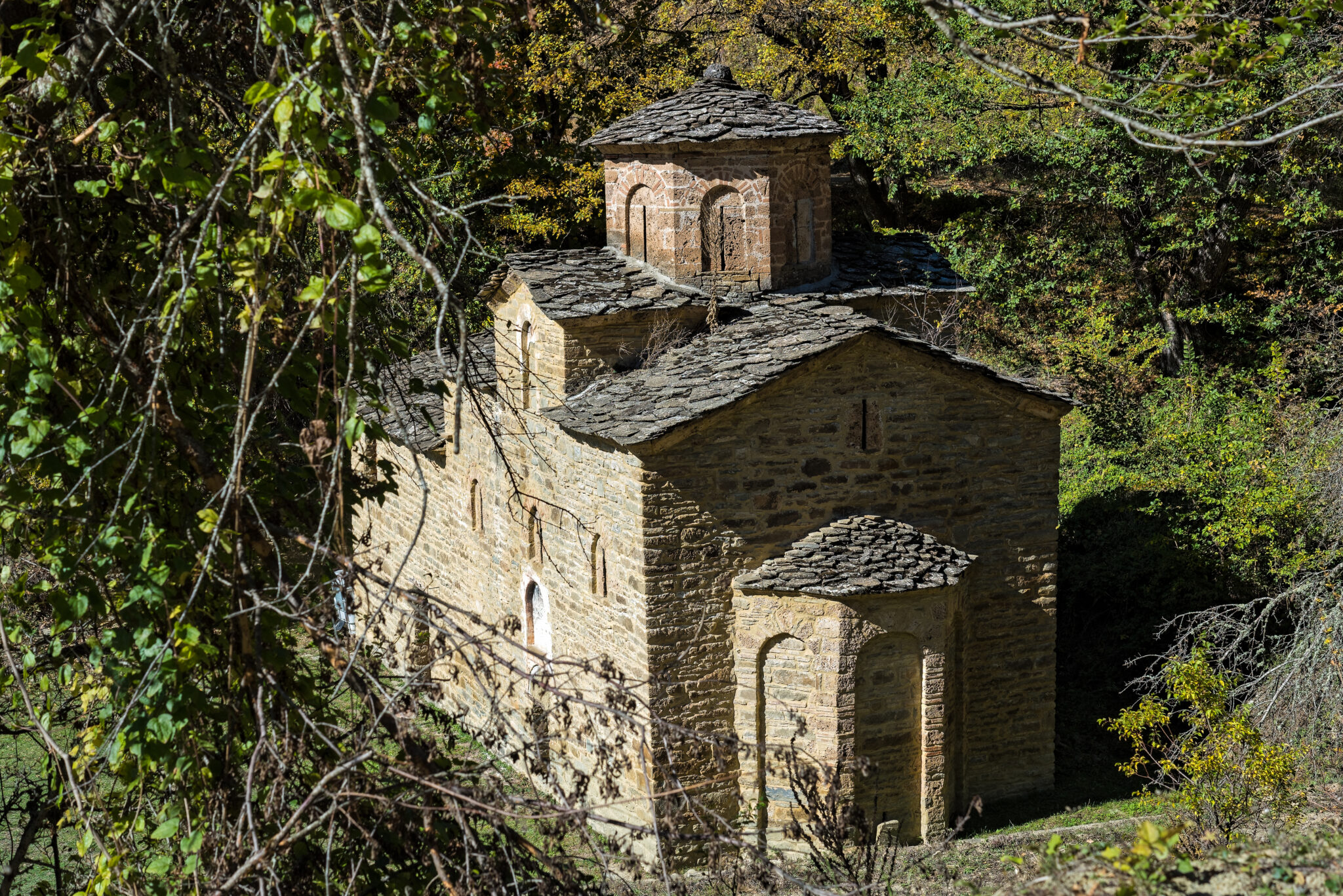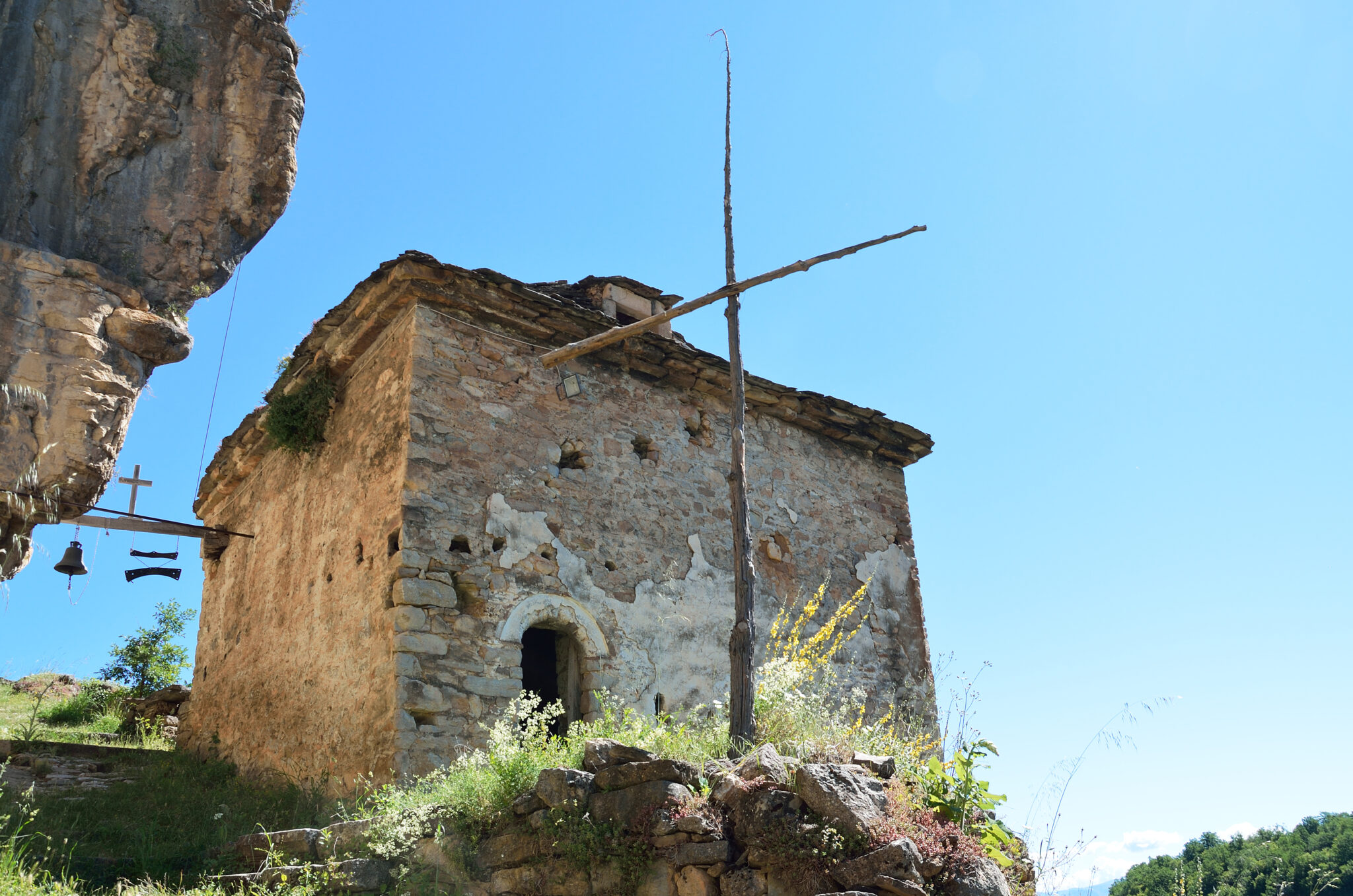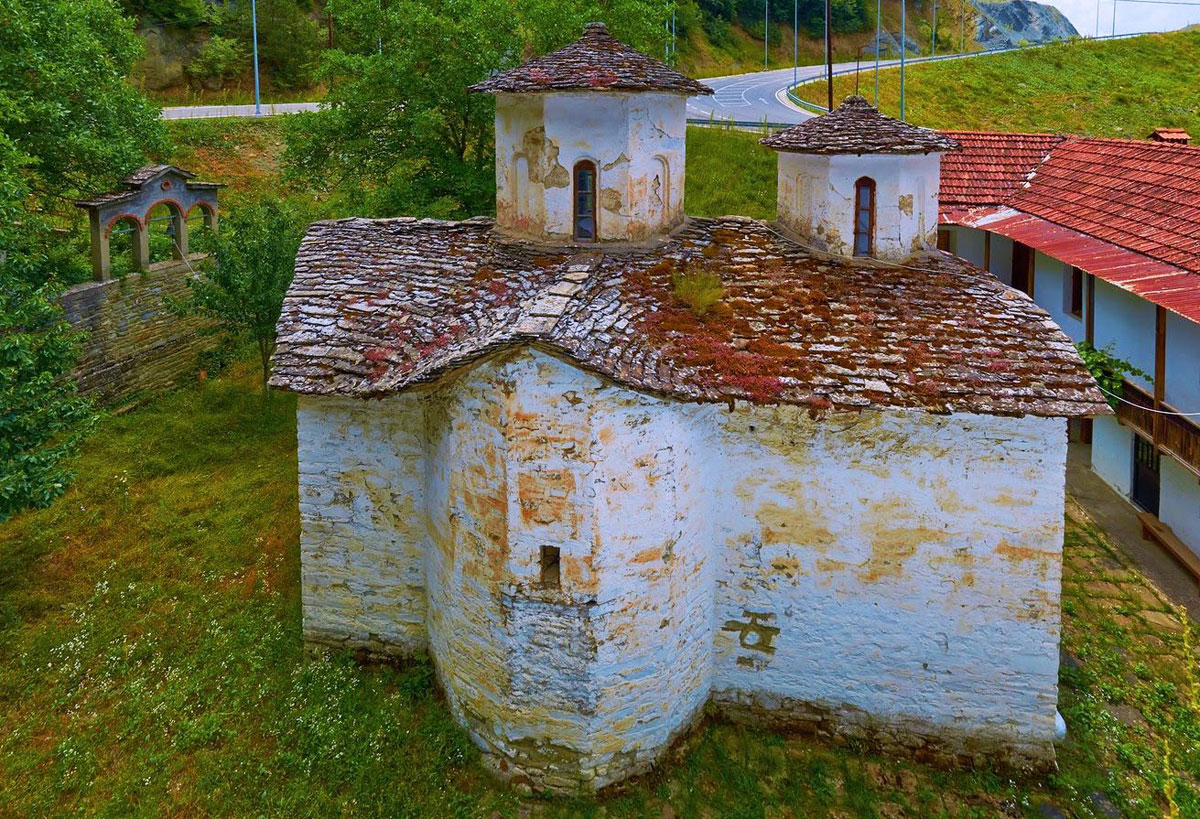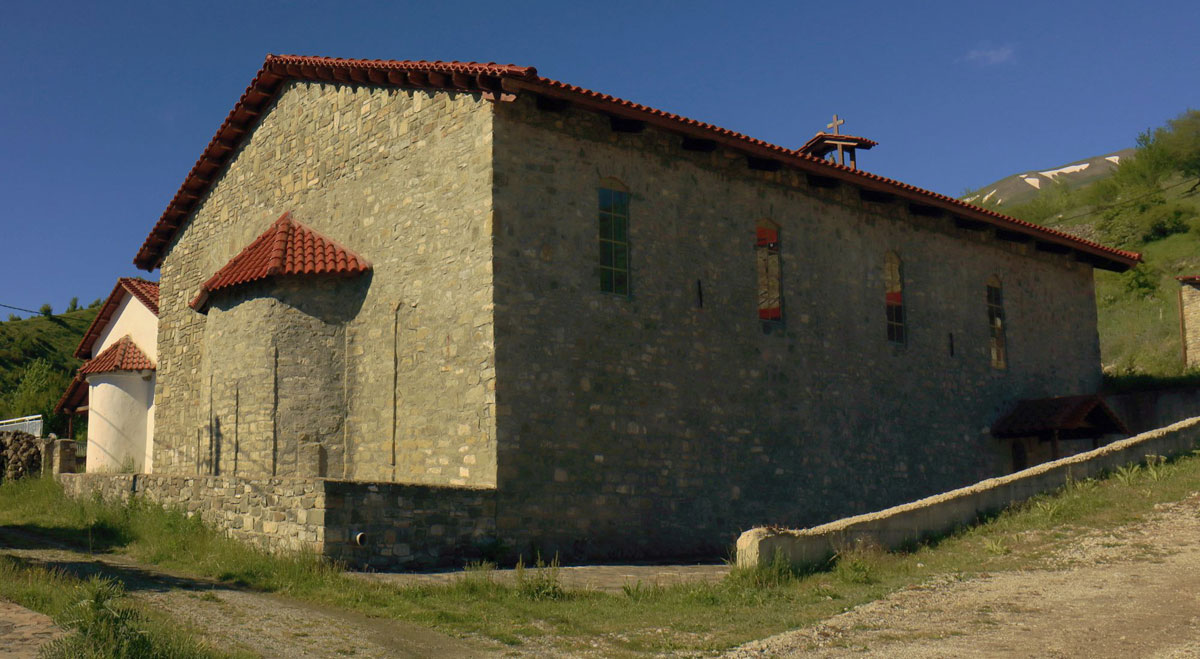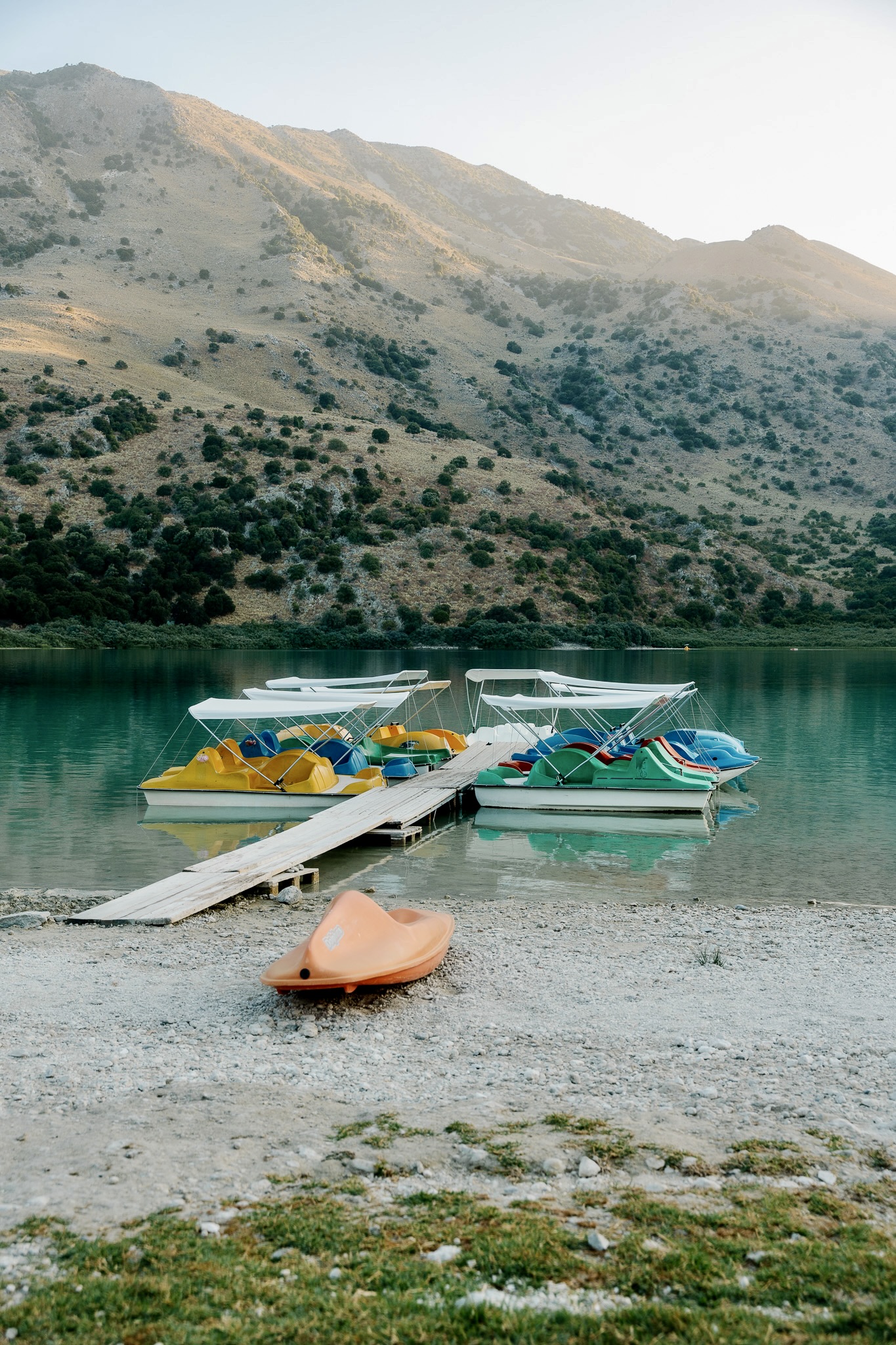One of the true delights of visiting Mt Grammos is discovering its endless capacity to surprise and fascinate every time. This mountain, where one cannot tire of wandering and admiring the untouched natural landscapes, has been marked by some of the darkest events in Greek history. On one hand, bucolic alpine vistas rise thousands of meters above sea level, and on the other, wild dense forests cover every slope, interspersed with half-forgotten paths.
These are just a few reasons why one might return repeatedly to this mysterious mountain in the regions of Eperus and Western Macedonia, to uncover the well-hidden secrets of this remote corner of Greece. Similarly, the monasteries of Mt Grammos stand as unique relics of an even more forgotten history, inviting us to discover them.
Monastery of Saint Zacharias
A post-Byzantine era monastery built at the edge of a series of mountain meadows along the flow of the Aliakmonas River, the Monastery of Saint Zacharias was founded in the late 16th century in a location almost out of a fairy tale. An immense mountainous landscape among the endless peaks and forested expanses of Mt Grammos frames this lesser-known monastery, which has an interesting yet somewhat shadowy history.
It appears that the continuous movements of people in the Balkans did not leave the monastery untouched, and at some unknown point in time, it was converted into a mosque. Later, it fell into disuse and was left to the ravages of time until it gradually came back into the limelight after the Balkan Wars. More than a century later, little is known about the history of this mysterious monastery, which was declared a protected monument in 1990.
Monastery of Tsoukas
Perched on a large precipitous rock above the Stenopotamos, a tributary of the Aliakmonas River, the Monastery of Tsoukas is one of the most distinctive unknown monasteries of Mount Grammos. Named after a nearby older settlement that is abandoned today, the monastery lies beside a particularly thin waterfall that flows into the Stenopotamos.
The interior of the monastery is simple, devotional, and Byzantine. It is said that the church once had a founding inscription from 1225, which was destroyed at some point. Notably, the entire space was destroyed during World War II. However, relatively quickly, in 1961, the monastery was declared a protected monument, initiating a long restoration process that was completed relatively recently.
Monastery of Saint George of Eptachori
Located on the slopes of Mount Taliaros, just above Eptachori, the historic Monastery of Saint George, with its unique iconography, dates its foundation to 1625. Essentially, this is a highly refined and complex architectural church, filled with frescoes from the post-Byzantine period that splendidly demonstrate the survival of Christian art in the Balkans. The church, together with the cemetery church of the Presentation of the Virgin Mary located slightly higher up, has been declared a protected monument and is well worth a visit if you find yourself in this corner of Mount Grammos.
Panagia of Grammosta
Built on the site of an earlier church that was destroyed in the 19th century, the church of Panagia of Grammosta was erected in 1887. Known for the icon of Panagia Grammoustiani, the church has historically been a custodian of the historic icon commissioned from craftsmen in Venice in the 17th century. It is also noteworthy that for the Vlach Greeks, the Panagia Grammoustiani is considered a protector of the Vlachs who, according to tradition, accompanied them on their movements across the plateaus of Macedonia. The church today is stone-built with a large arch, and it is a wonder it still stands upright, having been completely destroyed during the dark years of the Civil War, until it was fundamentally restored and rededicated to the local community.
Read also:
Meteora: Ascending to Greece’s Spiritual Heights
Avgo Monastery: Inspiring Awe and Reverence
Panagia Skripous, a Valuable Monument in Viotia



